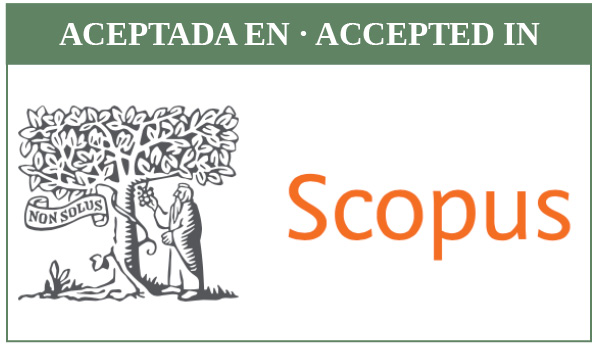On the toponym Gemellæ > Jamīlā > Malīlī > Mlili: some historical geography notes about the Ziban of Biskra during the Middle Ages
DOI:
https://doi.org/10.30827/meaharabe.v70i0.15168Keywords:
Gemellæ/Jamīlā, Toponymy, Algeria, Ziban, Arab-Berber sourcesAbstract
These historical geography notes reopen the issue of the ancient toponym Gemellæ in the written sources of medieval Maghreb, in which the place name appears in different graphic forms. The place, which played quite an important role in the configuration of the southern boundaries of Roman Numidia, is located in the western part of the Ziban mountains, in Algeria. The area constitutes a large geographic region in south-eastern Algeria, between the southern part of the Aurès mountain range and the Lower Sahara. The paper recalls how the ancient place name Gemellæ (sometimes associated with the small town of El Kasbat) came to be identified with the Arab-Berber place name Jamīlā, through the critical reading of some texts from the medieval Maghreb (chroniclers and geographers) and specialized bibliography. One of the central aspects of this brief note revolves around the somewhat surprising contribution by the eastern geographer al-Muqaddasī, who provided the spelling of the toponymic name Jamīlā.
Downloads
References
IBN ‗IḎĀRĪ. Al-Bayān al-mugrib fī ajbār al-Andalus wa-l-Magrib. Édition Georges S. Colin & Évariste Lévi-Provençal, Leyde: E. J. Brill, 1948-1951, 2 vols.
IBN JALDŪN, ‗Abd al-Raḥmān. Tārīj Ibn Jaldūn. Édition Jalīl Šaḥāda et révi- sion Suhayl Zakkār, Beyrouth: Dār al-Fikr, 2000-2001, 7 vols. et 1 vol. d‘index.
IBN JURRADĀḎBIH. Kitāb al-masālik wa-l-mamālik. Édition et traduction française Michael Johan de Goeje, Leyde: E. J. Brill, 1889.
IDRĪS ‗IMĀD AL-DĪN. Tārīj al-julafā’ al-fāṭimiyyīn bi-l-Magrib. Al-qism al- jāṣṣ min ‘Uyūn al-ajbār. Édition Muḥammad Ya‗lāwī, Beyrouth: Dār al-Garb al-Islāmī, 1985.
AL-MUQADDASĪ. Aḥsan al-taqāsīm fī ma‘rifat al-aqālīm. Texte arabe et tra- duction française Charles Pellat, Description de l’Occident Musulman au IVe
= Xe siècle. Alger: Éditions Carbonel, 1950.
AL-NU‗MĀN. Risālat iftitāḥ al-da‘wa. Édition Wadād al-Qāḍī, Beyrouth: Dāral-Ṯaqāfa, 1970.
CAMBUZAT, Paul-Louis. L’évolution des cités du Tell en Ifrîḳiya du VIIe au XIe siècle. Alger: Office des Publications Universitaires, 1986, 2 vols.
CHAKER, Salem. ―Abaritana/Abaris ↔ Awaris/Awras?‖. Dans Encyclopédie berbère. Aix-en-Provence: Édisud, 1984, vol. I, p. 59.
DESANGES, Jehan. ―Abaritana ou Avaritana provincia‖. Dans Encyclopédie berbère. Aix-en-Provence: Édisud, 1984, vol. I, pp. 57-59.
FORSTNER, Martin. Das Wegenetz des Zentralen Maghreb in islamischer Zeit. Ein Vergleich mit dem antiken Wegenetz. Wiesbaden: Otto Harrassowitz, 1979.
GALAND-PERNET, Paulette. ―‗Blanc‘, lumière, mouvement. À propos de l‘origine des termes de couleur en berbère‖. Littérature Orale Arabo-Berbère, 16-17 (1985-1986), pp. 3-20.
GSELL, Stéphane. Atlas archéologique de l’Algérie, édition spéciale des cartes au 200.000e du Service Géographique de l’Armée avec un texte explicatif ré- digé par Stéphane Gsell correspondant de l’Institut. Alger: Adolphe Jourdan– Paris: Fontemoing et Cie, 1911.
GUÉDON, Stéphanie. La frontière romaine de l’Africa sous le Haut-Empire.
Madrid: Casa de Velázquez, 2018.
JADLA, Brahim. ―Les Fatimides et les Kutāma. Une alliance stratégique ou un mal nécessaire?‖. Mélanges de l’École Française de Rome, 115, 1 (2003), pp. 503-512.
LEWICKI, Tadeusz. ―Une langue romane oubliée de l‘Afrique du Nord. Obser- vations d‘un arabisant‖. Rocznik Orientalistyczny, XVII (1953), pp. 415-480.
M‘CHAREK, Ahmed. ―Continuité de l‘ethnonymie, continuité du peuplement au Maghreb de l‘Antiquité à nos jours: le cas des Berbères Auares (Hawāra) et Dianenses ou Zanenses (Zanāta)‖. Comptes Rendus de l’Académie des Ins- criptions & Belles-Lettres, 159, I (2015), pp. 445-477.
MEOUAK, Mohamed. ―Biskra et ses oasis au Moyen Âge, marge aurésienne, marge saharienne? Notes préliminaires‖. Dans Stéphanie GUÉDON (éd.). La frontière méridionale du Maghreb. Approches croisées (Antiquité-Moyen Âge). Bordeaux: Ausonius Éditions, 2018, pp. 215-242.
—. Les Ziban entre Aurès et Sahara. Une géographie historique de Biskra et de ses oasis du Moyen Âge à la fin de l’époque moderne. Helsinki: Academia Scientiarum Fennica, 2017.
MEOUAK, Mohamed. ―Remarques sur la genèse du peuplement antique et mé- diéval du Maghreb: l‘apport de la toponymie et de la philologie‖. Rocznik Orientalistyczny, LXVI, 1 (2013), pp. 58-73.
MODÉRAN, Yves. Les Maures et l’Afrique romaine (IVe-VIIe siècle). Rome: École Française de Rome, 2003.
TROUSSET, Pol. ―Gemellae (El Kasbat)‖. Dans Encyclopédie berbère. Aix-en- Provence: Édisud, 1998, vol. XX, pp. 3008-3013.
VATTIONI, Francesco. ―Abaritanus‖. Antiquités Africaines, 32 (1996), pp. 9-12.
Downloads
Published
How to Cite
Issue
Section
License
The authors publishing their work in this journal agree to the following terms and conditions:
1. The authors retain the copyright and give the journal the right to be the first publication of the work and also to be licensee under a Creative Commons Attribution License which allows others to share the work, provided the author of the work and the initial publication in this journal are acknowledged.
2. Authors may make additional agreements separately for the non-exclusive distribution of the version of the work published in the journal (for example, putting it in an institutional repository or publishing it in a book), with acknowledgement of its initial publication in this journal.
3. Authors are allowed and encouraged to electronically disseminate (for example, in institutional repositories or on their own web page) the published version of their works (publisher's post-print version) or, if not possible, the author's reviewed and accepted post-print version. This is to facilitate productive exchanges, and allow for earlier and greater citation by third parties of the published works (See The Effect of Open Access).
4. The journal accepts no responsibility for the opinions expressed by the authors.















